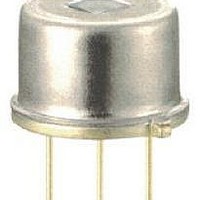EKMA1202120 Panasonic, EKMA1202120 Datasheet

EKMA1202120
Specifications of EKMA1202120
Related parts for EKMA1202120
EKMA1202120 Summary of contents
Page 1
... This makes it easy to mount the sensor on thin or compact products with limited space. 2. Motion detection with 3mm diameter miniature flat lens diameter flat surface lens is possible using Panasonic’s unique Lens Formation Technology for silicon substrates, making the lens operating substantially small compared to other conventional sensors. 3. ...
Page 2
PRODUCT TYPES PERFORMANCE 1. Detection Performance Metal Tab 2. Maximum Rated Values (Common for both PE-lens type, and Si-lens type) Ver. 1.1 ...
Page 3
Electrical Characteristic (Conditions for Measuring: Ambient temperature: 25°C (77° F) (*4) (*5): “Sleep mode” or “Standby mode” is for current consumption 1µA type. Please refer to “TIMING CHART”. TIMING CHART 1. Digital Output (For current consumption 1µA) [Mode] [Duration] ...
Page 4
Digital Output (For current consumption 2µA and 6µA) [Duration] DETECTION PERFORMANCE 1. Polyethylene-lens type Metal Tab 2. Silicon-lens type Ver. 1.1 ...
Page 5
Notes Regarding the Detection Zone As shown on the diagram, the detection zone is polarized target enters the detection zones + and – at the same time, the signals are respectively cancelled and cannot be detected. (Please ...
Page 6
DIMENSIONS 1) Polyethylene-lens type 2) Silicon-lens type When designing your products When designing your products Ver. 1.1 ...
Page 7
NOTE 1. Basic Principles 2. Other Handling Cautions 3. Ambient Environmental Conditions Ver. 1.1 ...
Page 8
External surge voltages 5. Power supply-superimposed noise 6. Drop damage Ver. 1.1 ...








